AlterLock bike alarm
An unobtrusive bike alarm and tracker that works via a smartphone app
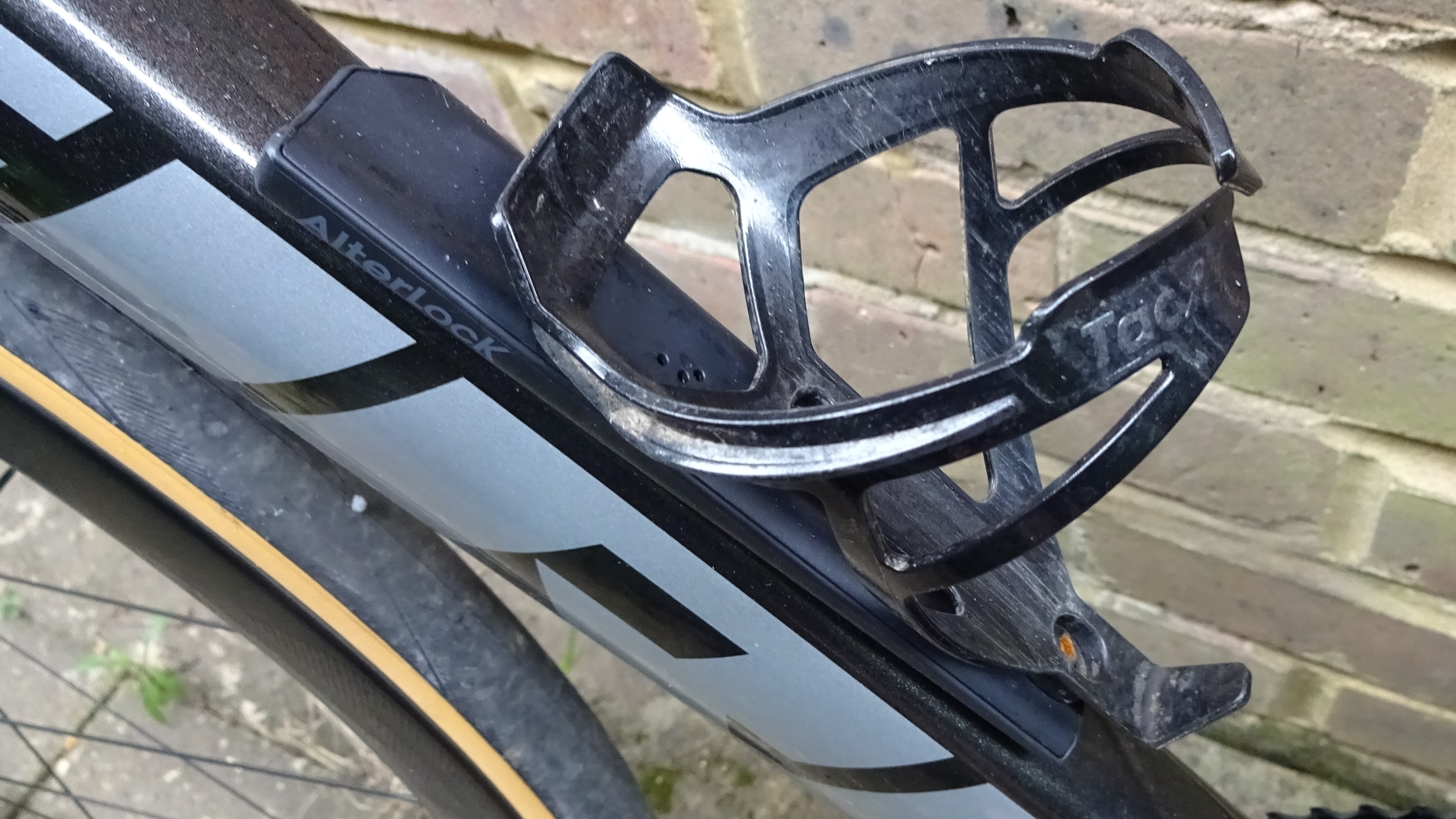
AlterLock is a neat, unobtrusive way to add an alarm to your bike and to track if it does go missing. It’s easy to use and gives an extra measure of comfort that your bike will be where you left it. But the longer distance comms to your smartphone requires a subscription and has patchy coverage in much of the UK.
-
+
Compact, light bike alarm that won’t ruin your bike’s aesthetics
-
+
Lots of options to parameterise
-
+
Tracking if your bike does go missing
-
-
Wireless comms coverage is patchy in hilly areas
-
-
Alarm is probably not noisy enough to deter the determined thief
-
-
On-going subscription required
You can trust Cycling Weekly.

Leaving your bike when you’re out for a ride is always a bit of a nerve-racking experience. Unless you carry your best bike lock (and a supplementary cable lock), which rather spoil a recreational ride, you’re never quite sure if your bike is safe, even if you’re only leaving it for a few minutes to queue for a coffee.
Even carrying a small cable lock around feels like a misuse of valuable pocket space, and it’s not going to deter any but the most opportunist of thieves.
So the Japanese-designed AlterLock GPS bike tracking device feels like a clever way to up your bike’s security during a cafe stop. Although it’s got “lock” in its name, it’s not a lock but an alarm that detects if your bike is moved and sounds an alarm. It also sends an alert to your phone that something is amiss.
It’s a slim device, weighing just 46 grams, designed to fit under a bottle cage. AlterLock has CFD modelled airflow over the device to show that it won’t make your bike any less aero.
It comes with extra-long Torx mounting bolts that will fit through your cage and the mounting holes in your AlterLock to attach both to your frame. It’s really unobtrusive and slender enough not to affect access to bottles. You can select anti-tamper bolts when you buy it, if you want to be sure that AlterLock can’t just be unscrewed from your bike.
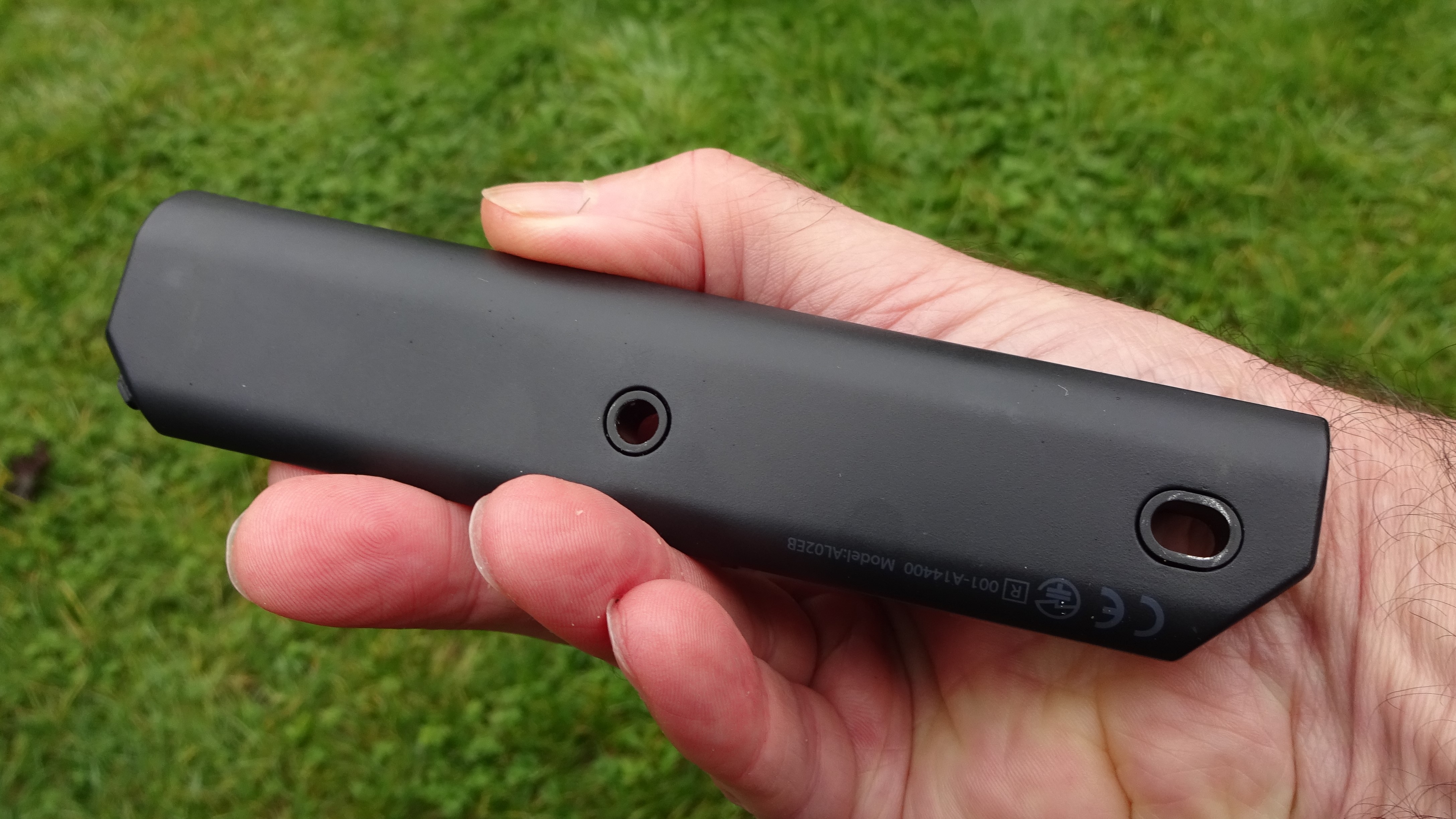
You power AlterLock up periodically via a USB-C cable. Battery life is up to six weeks if used on the standard settings. It’s IP66 weatherproof rated, although the sample AlterLock was missing the rubber bung that protects the USB port from the weather.
AlterLock comes with a smartphone app (Android and Apple) that uses Bluetooth to communicate with the alarm, allowing you to set and unset it via a slider at the bottom of the screen. It beeps once to tell you it’s set and twice when you unset it again.
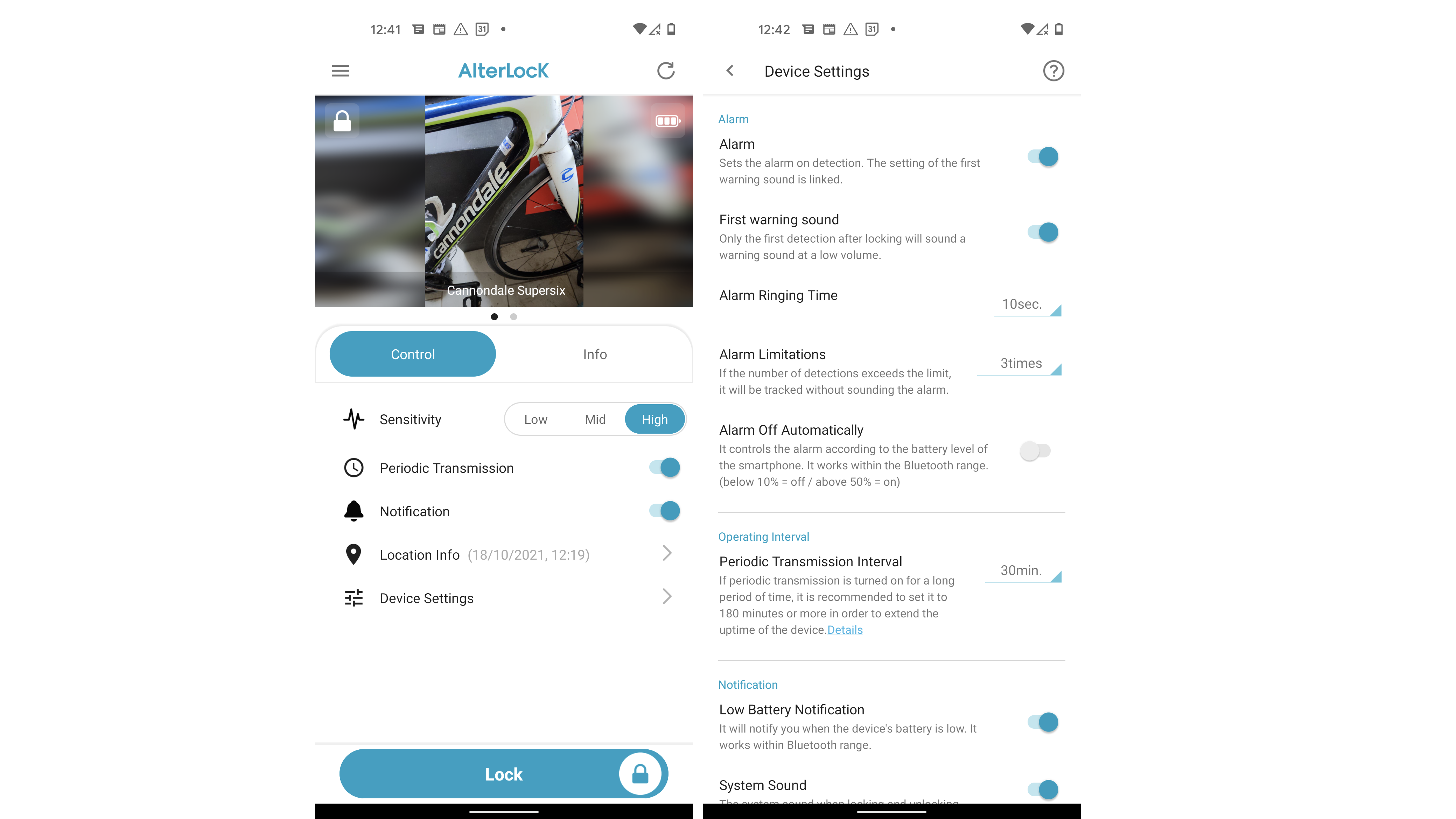
AlterLock is activated and deactivated via your smartphone; it's hightly configurable
Once it’s set, any movement will sound a beeping alert. If it keeps detecting movement, an alarm will sound for a period that you set via the app, which can be anything from 10 seconds up to a minute. It’s noisy enough to draw attention, but not ear-splitting. After a delay, further movement will trigger subsequent alarms - you can set the alarm to go off between one and three times or to unlimited repeats.
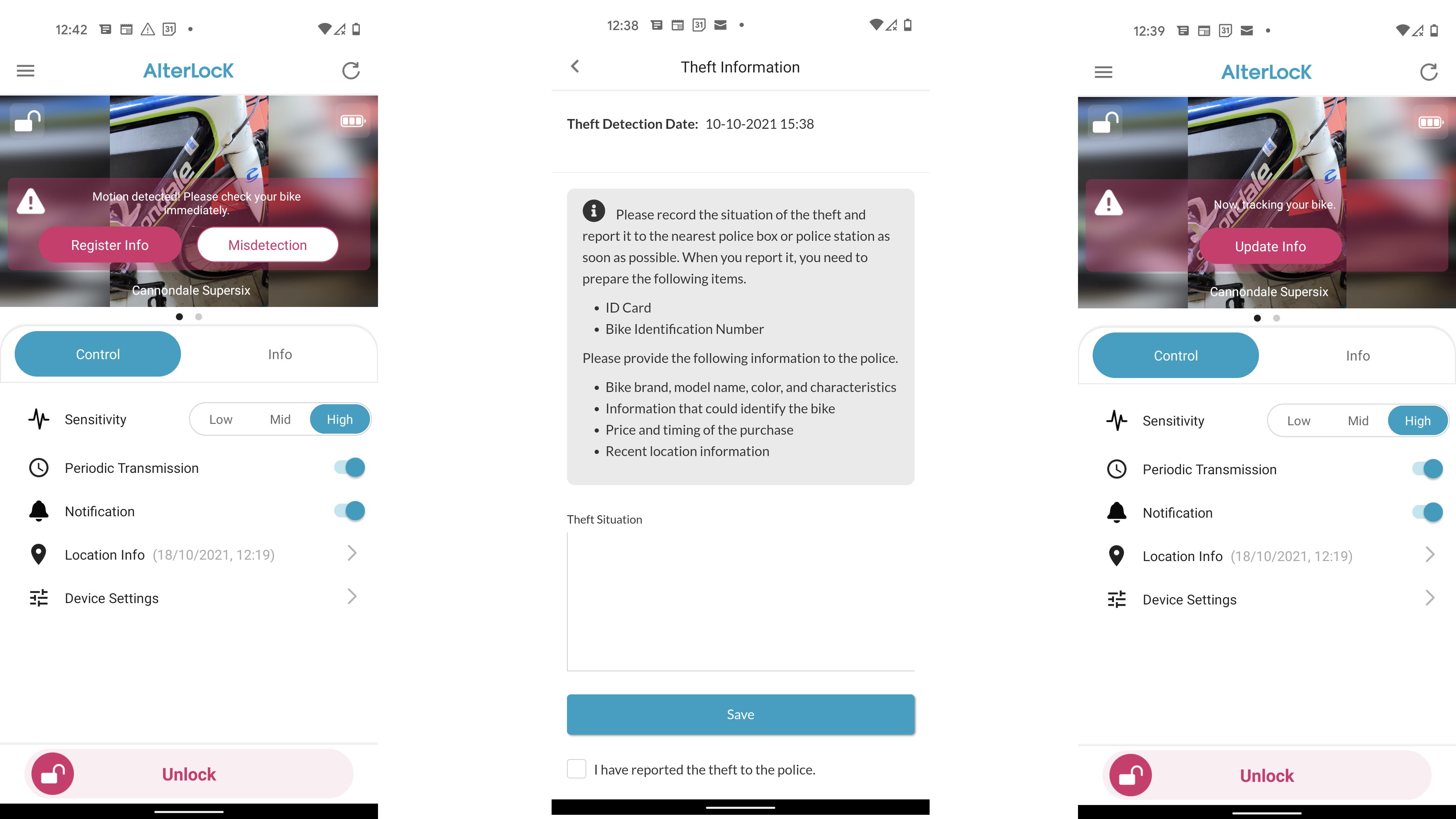
If the alarm is triggered, AlterLock sends an alert to your phone. You can record theft information and AlterLock will start to track your bike
At the same time, AlterLock will send an alert to your phone to let you know that it’s detected movement, so even if your bike is out of sight you know that you need to check that it’s still safe - there’s more on how well this worked for me later. You can either note the alert as a false alarm or record details in the app and potentially share theft details with police via the associated URL.
As well as the alarm functionality, there’s another set of screens that lets you record details of your bike like its frame number and its maintenance history, such as when you last changed your tyres or cleaned your chain.
Different comms protocols
BLE is designed to work over comparatively short ranges. How far depends on factors like whether there’s a wall between your phone and your bike. In the open air, BLE comms worked for me over around 10 metres, but this dropped to a couple of metres when I was indoors and the bike outside.
But once you’re out of range of BLE, AlterLock switches to using a wireless protocol called Sigfox. It’s a low energy protocol that runs over 2G, 3G or 4G networks and that AlterLock uses for one-way communication to send its alert to your phone that the alarm has been triggered.
As well as the up-front cost for the device, currently discounted to £91.11 from the list price of £114.99, you need to pay a subscription to use AlterLock, payable via PayPal, which gives you access to Sigfox. It’s free for the first month, then costs £3.49 per month or £34.99 per year.
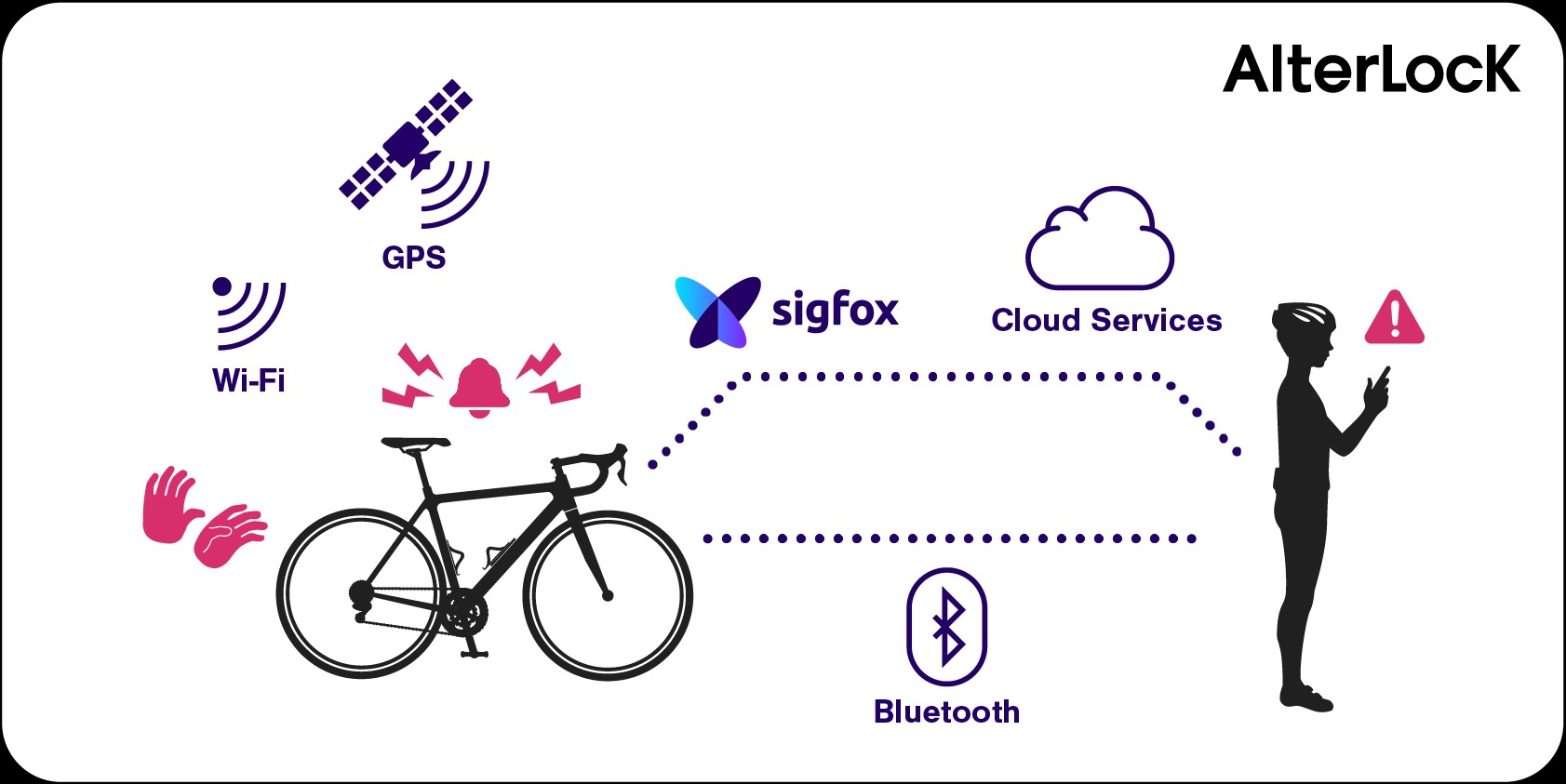
AlterLock will switch to using Sigfox over a wireless network once you're out of range of BLE
There’s a worldwide coverage map for Sigfox here. In the UK it’s OK for most of lowland England, Northern Ireland and the central belt of Scotland, but the map suggests there’s no coverage in the bulk of Scotland and Wales. It’s also patchy in upland areas of England like the Pennines and Lake District.
That’s also true in the Chilterns, where I live, and the Surrey Hills. Along with patchy mobile coverage, that meant that I didn’t receive an alert on my phone when the alarm was triggered while I was indoors. The bike alarm will still go off though, which might be enough to deter a thief.
Once the alarm has been triggered, AlterLock will also use its built-in GPS chip and Sigfox to send location information to your phone once a minute, where it is displayed on a map. You can set it to send a fix periodically even when the alarm hasn’t been triggered, although this will reduce battery life. If it’s moved somewhere where it can’t get a GPS fix, it will use WiFi to give you an approximate location.
Global coverage and the competition
AlterLock is also now available in Europe, where it costs €134.99 up front, which is currently discounted to €107.99. The monthly subscription cost is €3.99 per month or €39.99 per year. European coverage is pretty good, although as with the UK it’s patchy in more mountainous areas.
As yet, AlterLock hasn’t rolled out to the USA, as there’s limited Sigfox coverage. It says that it expects to use a different comms protocol when it launches Stateside.
AlterLock isn’t the only game in town, with Vodafone in the UK selling the Curve rear light which incorporates similar functionality and has an associated app. The up-front cost is lower than AlterLock, but the SIM contract costs £6 a month, reducing to £3 a month if you sign up for a 24 month contract.
We've also reviewed the Abus Alarmbox, which gives you an alarm but not tracking functionality and see our guide to GPS bike trackers for more options.
AlterLock is a neater looking solution though, particularly on a performance bike.
Up-front cost: £114.99 (currently discounted to £91.11)
Subscription cost: £3.49 per month / £34.99 per year
Weight: 46g
Contact: https://alterlock.net/en/

Thank you for reading 20 articles this month* Join now for unlimited access
Enjoy your first month for just £1 / $1 / €1
*Read 5 free articles per month without a subscription

Join now for unlimited access
Try first month for just £1 / $1 / €1
Get The Leadout Newsletter
The latest race content, interviews, features, reviews and expert buying guides, direct to your inbox!
Paul started writing for Cycling Weekly in 2015, covering cycling tech, new bikes and product testing. Since then, he’s reviewed hundreds of bikes and thousands of other pieces of cycling equipment for the magazine and the Cycling Weekly website.
He’s been cycling for a lot longer than that though and his travels by bike have taken him all around Europe and to California. He’s been riding gravel since before gravel bikes existed too, riding a cyclocross bike through the Chilterns and along the South Downs.
-
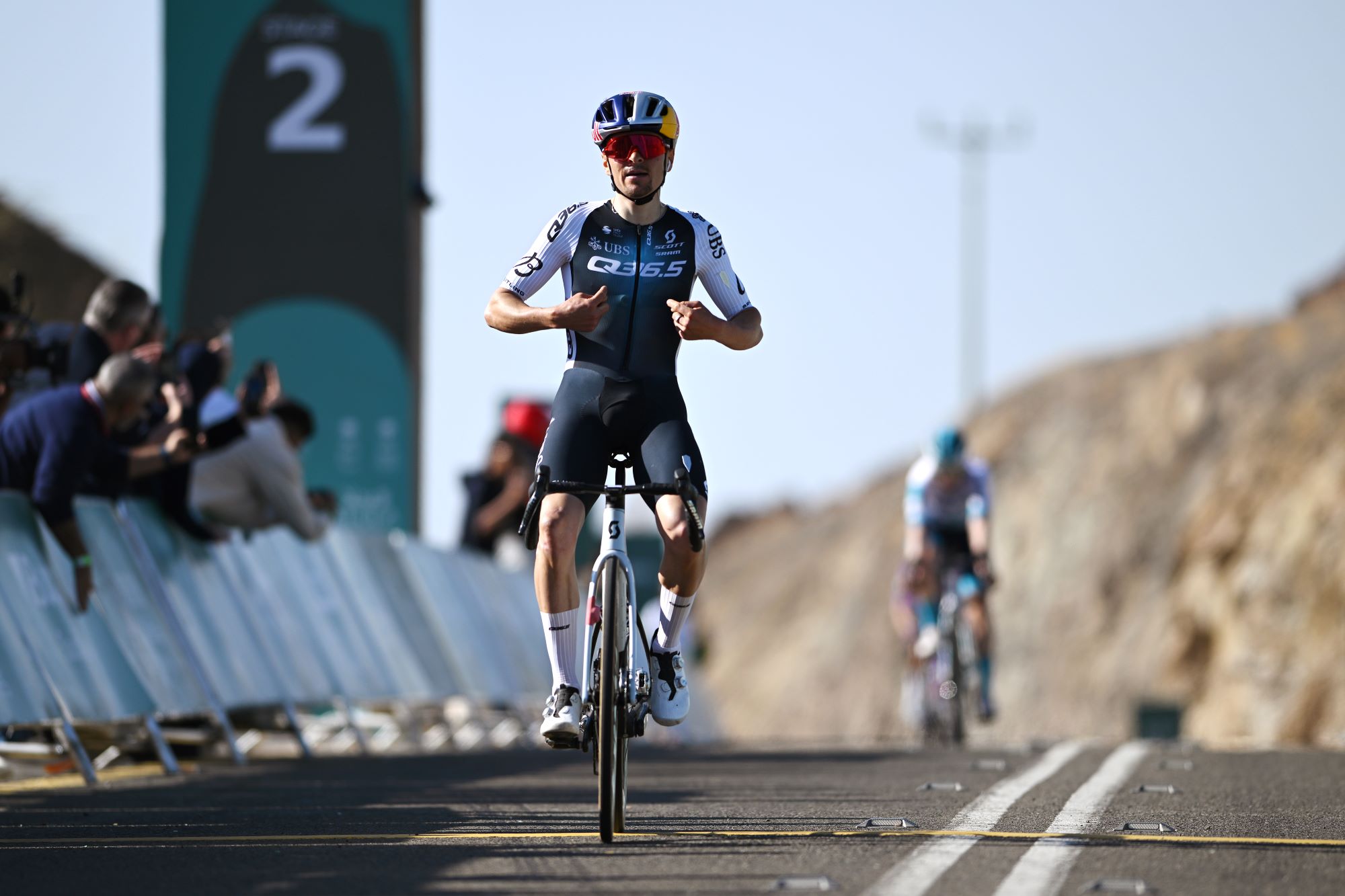 What does Q36.5 mean? We asked the people behind the Italian kit brand that sponsors Tom Pidcock's team
What does Q36.5 mean? We asked the people behind the Italian kit brand that sponsors Tom Pidcock's teamQ36.5's Luigi Bergamo and Lodovico Pignatti Morano take on Cycling Weekly's Q&A
By Tom Thewlis Published
-
 'If I were a tennis player then my career would be over': Remco Evenepoel contemplated early retirement after serious training accident
'If I were a tennis player then my career would be over': Remco Evenepoel contemplated early retirement after serious training accidentDouble Olympic champion was left with nerve damage and says his shoulder is not yet fully healed ahead of his return to racing at Brabantse Pijl
By Tom Thewlis Published
-
 'It can really push me along' - How a velodrome comeback is making Caleb Ewan faster on the road
'It can really push me along' - How a velodrome comeback is making Caleb Ewan faster on the roadAustralian says he'll "definitely" continue track work after rekindling passion
By Tom Davidson Published